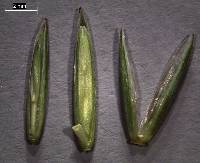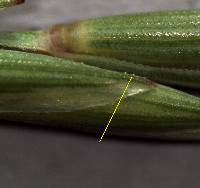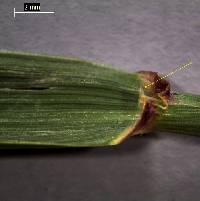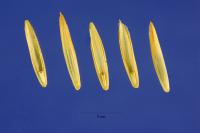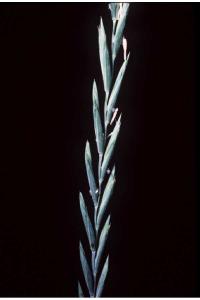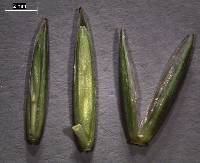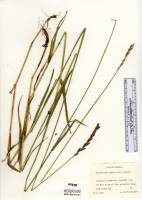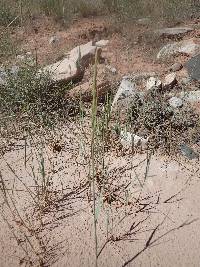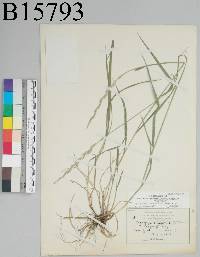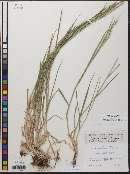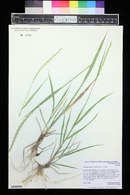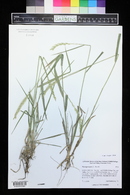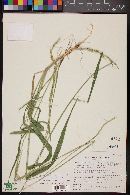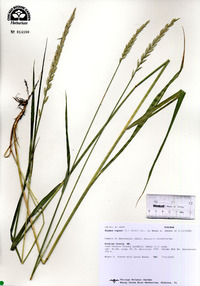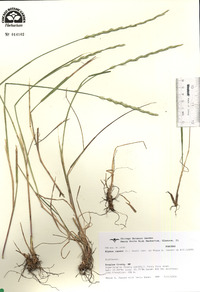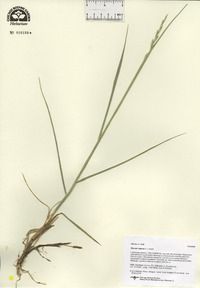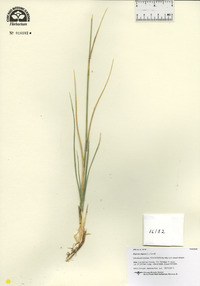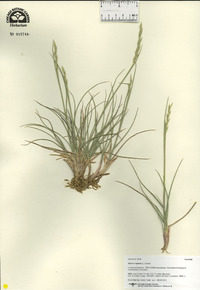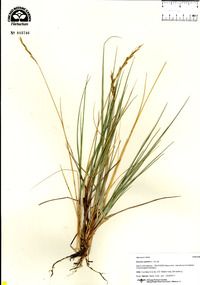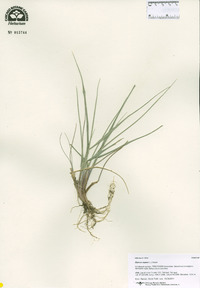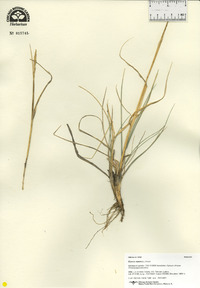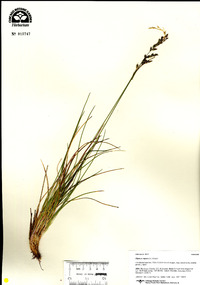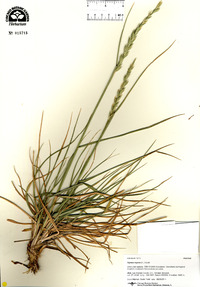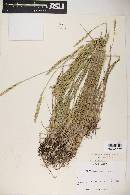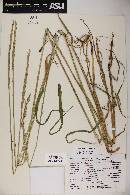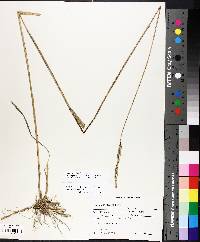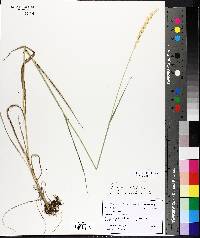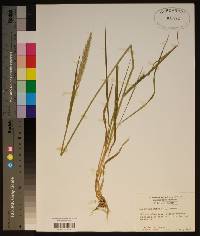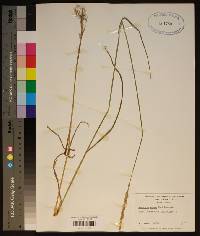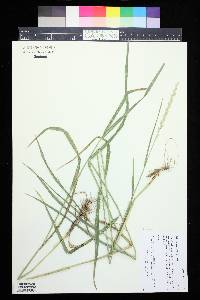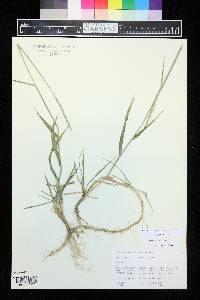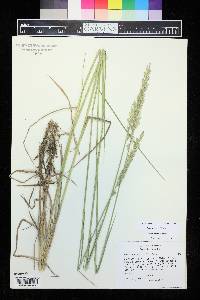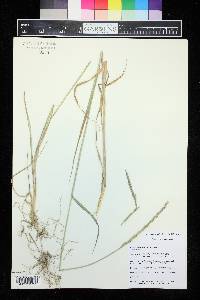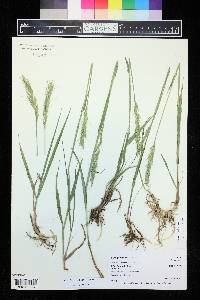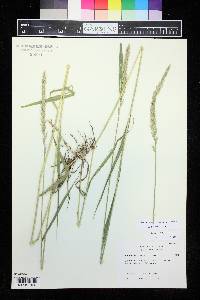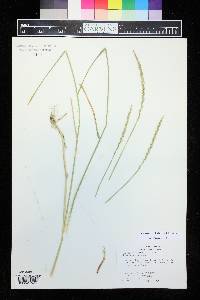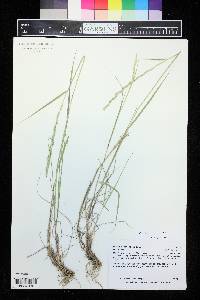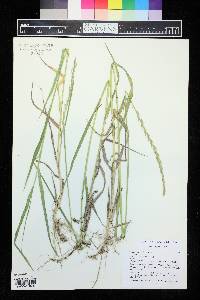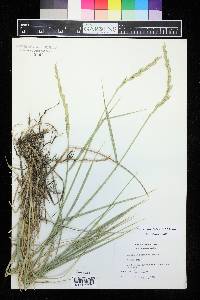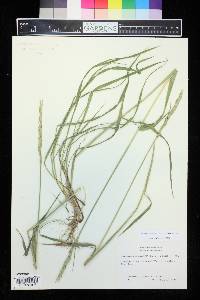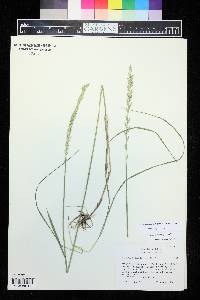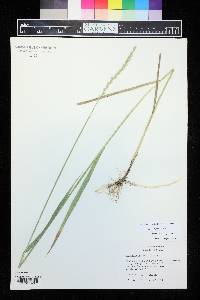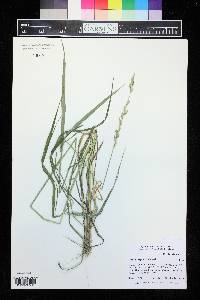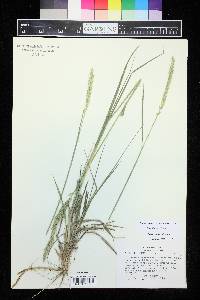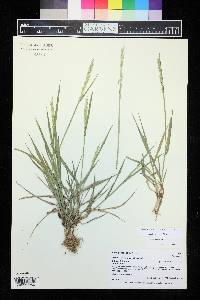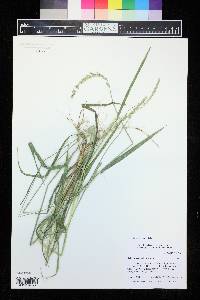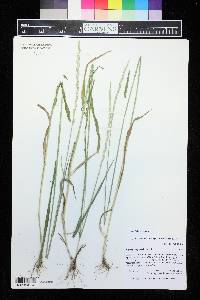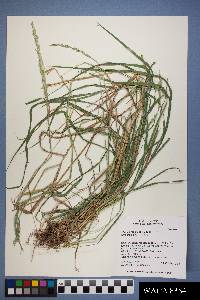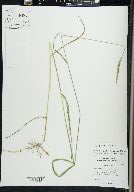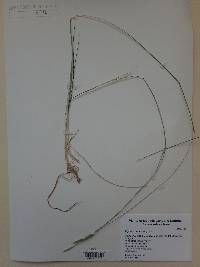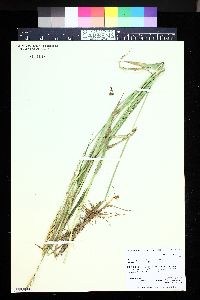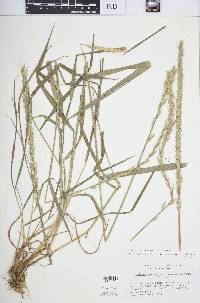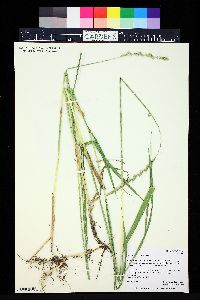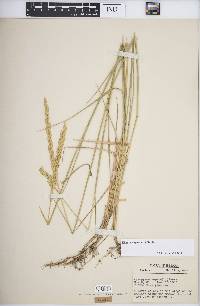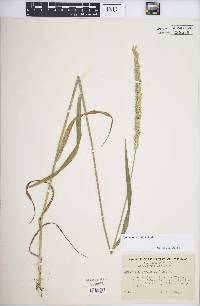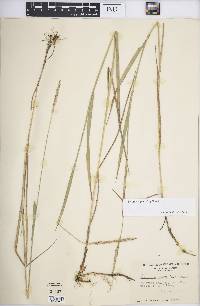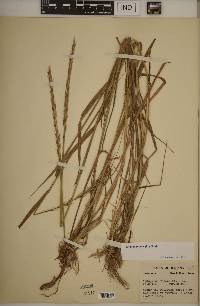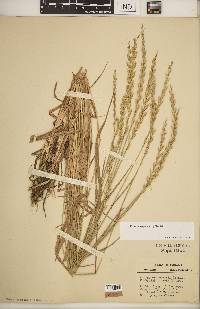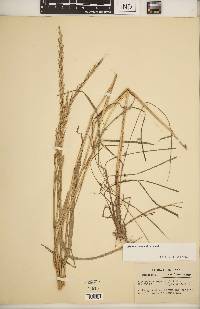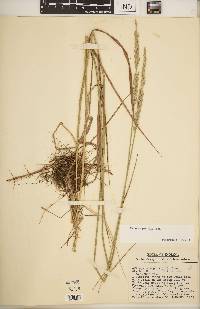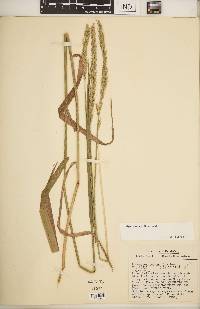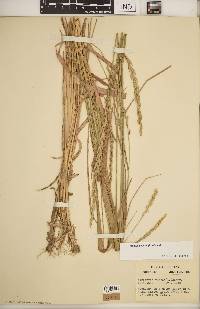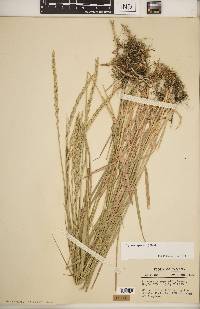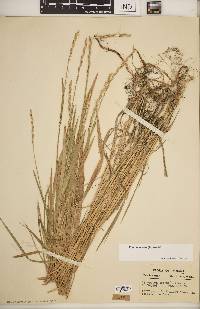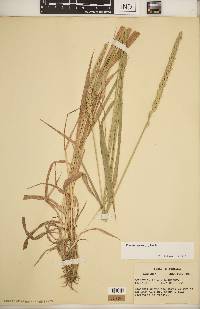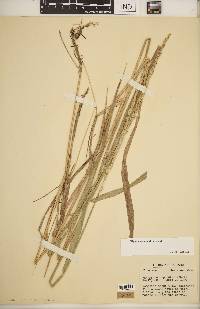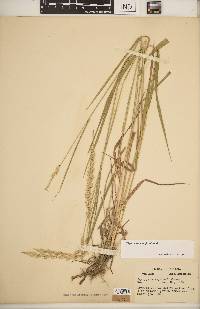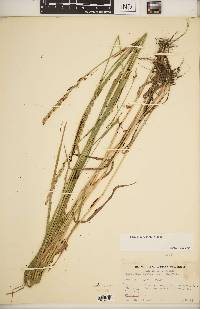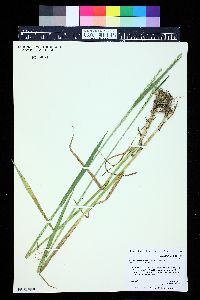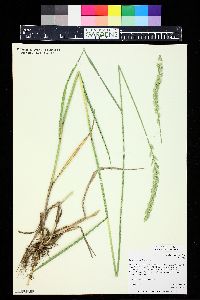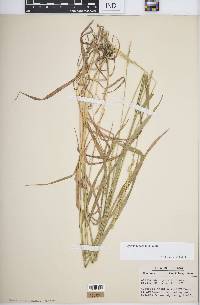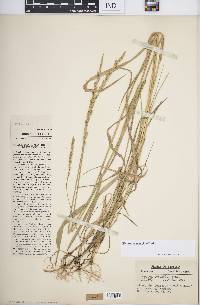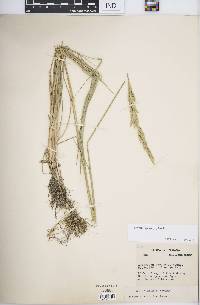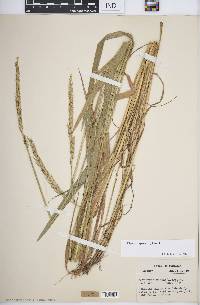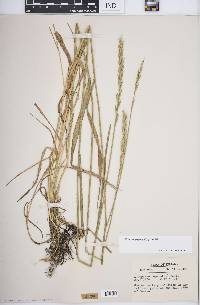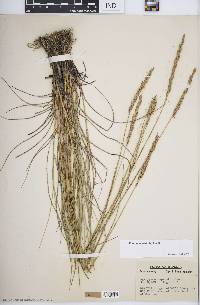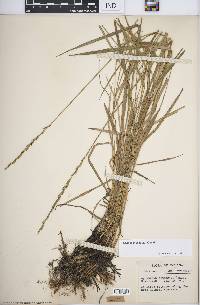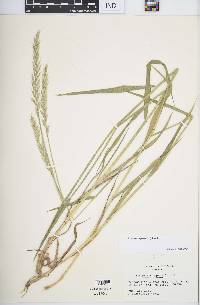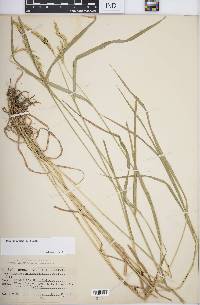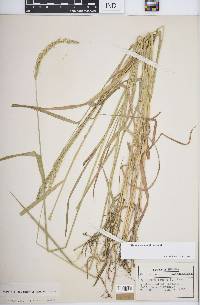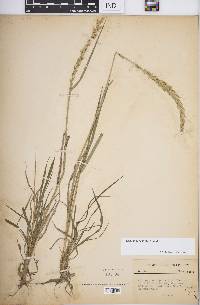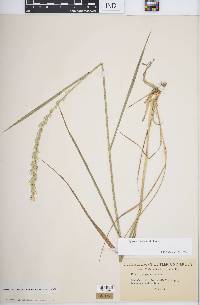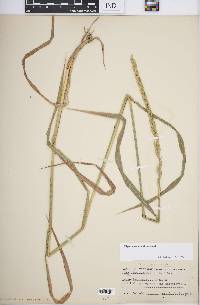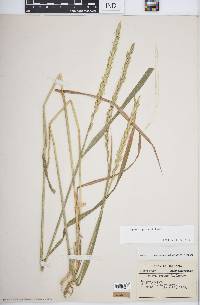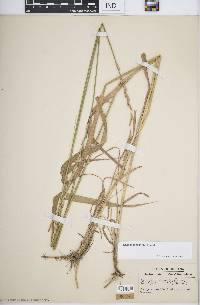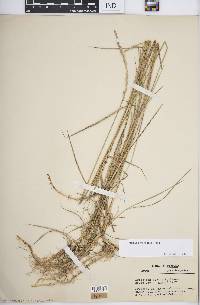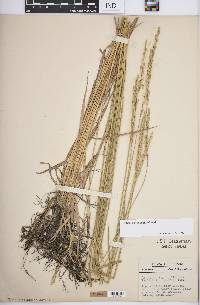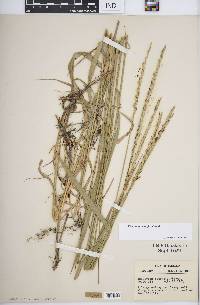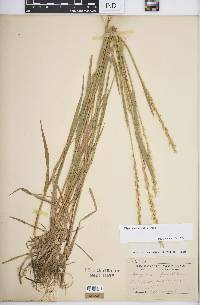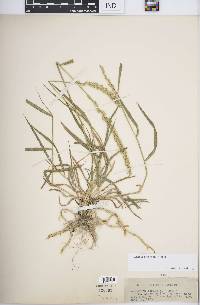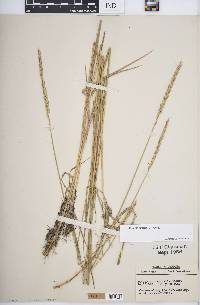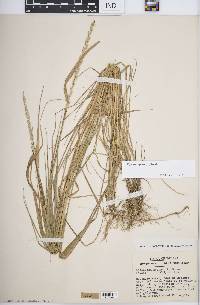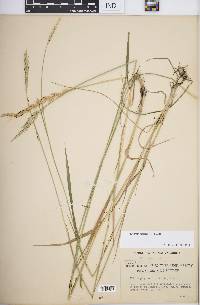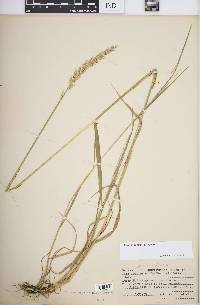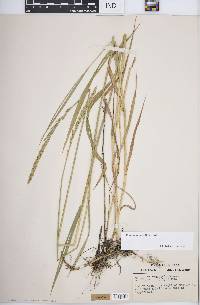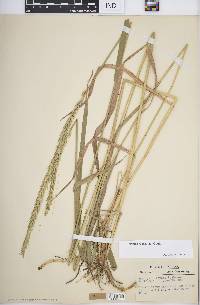
|
|
|
|
Family: Poaceae
Quackgrass, more...Creeping Wild Rye, couchgrass, creeping quackgrass, dog grass, quickgrass, quitch, scutch, twitch, Chiendent, Chiendent Rampant
[Agropyron junceum var. repens (L.) M. Marsson, moreAgropyron repens (L.) Beauv., Agropyron repens f. aristatum (Schumach.) Holmb., Agropyron repens f. geniculatum Farw., Agropyron repens f. heberhachis Fernald, Agropyron repens f. pilosum (Scribn.) Fernald, Agropyron repens f. repens (L.) P. Beauv., Agropyron repens f. setiferum Fernald, Agropyron repens f. stoloniferum Farw., Agropyron repens f. trichorrhachis Rohlena, Agropyron repens f. vaillantianum (Wulfen & Schreb.) Fernald, Agropyron repens var. aristatum , Agropyron repens var. nemorale Andersson ex Farw., Agropyron repens var. pilosum Scribn., Agropyron repens var. pubescens (Döll) Tzvelev, Agropyron repens var. subulatum (Schreb.) Roemer & J.A. Schultes, Agropyron repens var. typicum P.Candargy in P.Candargy, Agropyron repens var. vaillantianum (Wulfen & Schreb.) Roem. & Schult., Agropyron repens var. vulgare Döll, Agropyron sachalinense Honda, Elymus neogaeus Steud., Elymus repens var. aristatus (Schreb. ex Baumg.) Melderis & D.C. McClint., Elytrigia repens (L.) Desv. ex B.D. Jackson, Elytrigia repens subsp. caesia (J. Presl & C. Presl) Dostál, Elytrigia repens subsp. elongatiformis (Drob.) Tzvelev, Elytrigia repens subsp. pseudocaesia (Pacz.) Tzvelev, Elytrigia repens var. aristata Prokudin, Elytrigia repens var. caesium (J. Presl & C. Presl) Prokudin, Elytrigia repens var. glauca (Döll) Tzvelev, Elytrigia repens var. pubescens (Döll) Prokudin, Elytrigia repens var. subulatum (Roem. & Schult.) Prokudin, Elytrigia repens var. vaillantiana (Wulfen & Schreb.) Prokudin, Elytrigia repens var. vaillantianum (Wulfen & Schreb.) Prokudin, Elytrigia vaillantiana (Wulfen & Schreb.) Beetle, Elytrigia vaillantianum (Wulfen & Schreb.) Beetle, Trisetum repens subsp. magellanicum (E. Desv.) Macloskie, Triticum infestum Salisb., Triticum repens L., Triticum repens f. pubescens Döll, Triticum repens var. aristatum Döll, Triticum repens var. caesium Döll, Triticum repens var. subulatum (Roem. & Schult.) Nees, Triticum repens var. subvillosum Hook., Triticum repens var. vulgare Döll, Triticum vaillantianum Wulfen & Schreb.] |
Plants strongly rhizomatous, sometimes glaucous. Culms 50-100 cm. Leaves sometimes somewhat basally concentrated; sheaths pilose or glabrous proximally; auricles 0.3-1 mm; ligules 0.25-1.5 mm; blades 6-10 mm wide, usually flat, abaxial surfaces glabrous or sparsely pilose, adaxial surfaces usually sparsely pilose over the veins, sometimes glabrous, veins smooth, widely spaced, primary veins prominent, separated by the secondary veins. Spikes 5-15 cm long, 0.5-1.5 cm wide, erect, usually with 1 spikelet per node, occasionally with 2 at a few nodes; internodes 4-6(9.5) mm long, 0.5-1.2 mm wide, smooth or scabrous, glabrous, evenly puberulent, or sparsely pilose, hairs to 0.3 mm. Spikelets 10-27 mm, appressed to ascending, with 4-7 florets; disarticulation tardy, usually below the glumes, the spikelets falling intact. Glumes oblong, glabrous, keeled distally, keels inconspicuous and smooth proximally, scabrous and conspicuous distally, lateral veins inconspicuous, hyaline margins present in the distal 1/2, apices acute, unawned or awned, awns to 3 mm; lower glumes 8.8-11.4 mm, 3-6-veined; upper glumes 7-12 mm, 5-7-veined; lemmas 8-12 mm, glabrous, mostly smooth, sometimes scabridulous distally, unawned or with a 0.2-4(10) mm awn, awns straight; paleas 7-9.5 mm, keels ciliate from 1/2 to almost the entire length, apices emarginate, truncate, or rounded; anthers 4-7 mm. 2n = 22, 42. Genome StStH. Elymus repens is native to Eurasia; it is now established through much of the Flora region, extending from Alaska to Greenland and south to California, Texas, and North Carolina. It grows well in disturbed sites, spreading rapidly via its long rhizomes, as well as by seed. It is also drought tolerant. Although it is listed a noxious weed in several states, it provides good forage. It differs from E. hoffmannii -in having widely spaced, unequally prominent leaf veins and, usually, shorter awns. Godley (1947) demonstrated that lemma awn development, glaucousness, and the pubescence of the rachises are each effectively controlled by single genes. Long-awned plants are homozygous recessive, and awn-tipped plants homozygous dominant; glaucousness is dominant over non-glaucousness, and glabrous rachises over pubescent rachises. Awned plants appear to be established along the coasts of Newfoundland and Nova Scotia. They have generally been identified as Agropyron pungens (Pers.) Roem. & Schult. , a species that has obtuse, mucronate lemmas. FNA 2007, Utah Flora 1983; Field Gude to Forest & Mtn. Plants of N AZ 2009, USDA Common Name: quackgrass Duration: Perennial Nativity: Non-native Lifeform: Graminoid General: Ascending or erect, usually cespitose, with stems 30-150 cm tall, with a spike-like inflorescence can be weakly rhizomatous. Vegetative: Leaves sometimes basally concentrated, usually flat, 6-30 cm long, 3-10 mm wide, glabrous, sometimes hairy abaxially, with prominent primary veins; sheaths open, glabrous or pilose proximally; ligules to 1 mm. Inflorescence: Spike erect, 5-15 cm long, 5-15 mm wide, usually one spikelet per node, but can be 2 per node occasionally; internodes ca. 5 mm long, 1 mm wide; spikelets 1-2.5 cm long, against or near stem, with 4-7 florets; disarticulation above the glumes, beneath each flower; glumes oblong, keeled distally, 3-7 veined; lemmas 8-12 mm, glabrous; glumes and lemmas unawned or with awns to 4 mm; anthers 4-7 mm. Ecology: Found in woodlands, meadows, and shaded canyons from 5000-9000 ft. (1500-2800 m); often in disturbed sites such as cultivated fields and along waterways; flowers June-August. Distribution: Found throughout the United States. Notes: Native to Eurasia; grows well in disturbed sites and can spread rapidly, and is tolerant of droughts; is listed as a noxious weed in some states, but provides good forage. Is distinguished from E. trachycaulus by having glumes with keels toward the apex but smooth towards the base, and by having glabrous lemmas. Ethnobotany: Has been used for forage and erosion control. Etymology: Elymus comes from Greek name elymos for millet, while repens means having creeping and rooting stems. Editor: LKearsley, 2012 Strongly rhizomatous, green or occasionally glaucous, 5-10 dm, the culms hollow at anthesis; lvs mostly flat, 3-10+ mm wide, usually with scattered hairs above,
the numerous slender veins ca 0.2 mm apart; spikes erect, 8-17 cm, the middle internodes 4-7 mm; rachis- joints usually flat on one side and rounded on the other; spikelets 10-18 mm, 3-8-fld, disarticulating below the glumes; glumes about half as long as the spikelet, 5-7-veined, lanceolate, acute and usually with an awn 0.5-4 mm; lemmas 7-10 mm, 5-veined, glabrous to apically scaberulous, tapering to a point or a short, straight awn to 5(-10) mm; anthers 4-5.5 mm; 2n=42. Native of Eurasia and possibly our Atlantic coast, now widespread as a weed in moderately moist, disturbed sites throughout most of the U.S. and Can. (Agropyron r.; Elymus r.) A probable hybrid with Elymus trachycaulus has been called Agropyron ذseudorepens; the concept of Agropyron is now restricted to the crested wheatgrasses. Gleason, Henry A. & Cronquist, Arthur J. 1991. Manual of vascular plants of northeastern United States and adjacent Canada. lxxv + 910 pp. ©The New York Botanical Garden. All rights reserved. Used by permission. From Flora of Indiana (1940) by Charles C. Deam This species has become well established in the northern two thirds of the state, especially along roadsides and railroads where there is no effort to exterminate it. It is most abundant in the lake area where it sometimes covers acres of cultivated fields and pastures. Most of the landowners have despaired of exterminating it and merely use control measures. It is now known that it can be eradicated by the use of chemicals, and every landowner should proceed without delay to exterminate it. The extreme variability of this species has caused some confusion in its recognition. It has been decided to treat the varied forms as a species complex. Those who wish to divide the forms should see Fernald on the American variations of Agropyron repens in Rhodora 35: 182-185. 1933. ...... Indiana Coefficient of Conservatism: C =null, non-native Wetland Indicator Status: FACU Deam (1929): Quack grass became well established in many plpaces before the land owners became acquainted with its weedy nature. It is exceedingly difficult to eradicate when well established, especially in sandy soil. This species is used by the medical profession as a diuretic and is known to it as couch grass. Tons of the rhizomes are consumed annually in medicine. |
|
|
|


